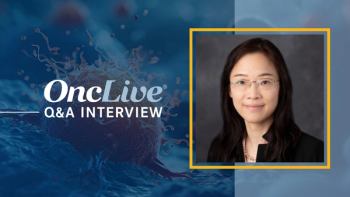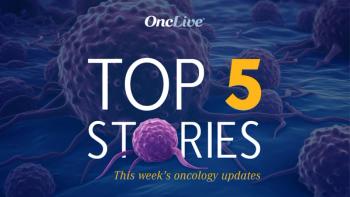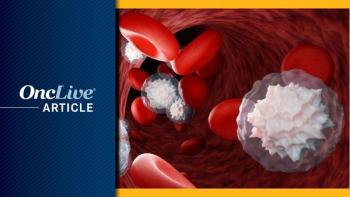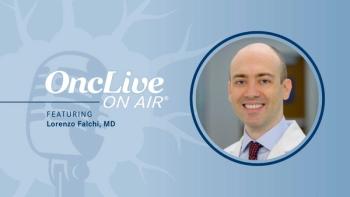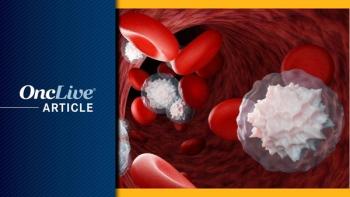
Role of Hypomethylating Agents in AML
Transcript:
Harry Erba, MD, PhD: How about the patient who is unfit for chemotherapy? I want to come to the discussion of BCL2 [B-cell lymphoma 2] and hedgehog inhibitors from my colleagues. I’ll set the stage by saying in these patients who are poorly defined as unfit for chemotherapy or older patients, we all have a different cutoff. It is definitely not 60 [years old] anymore either. It’s got to be older than that.
We’ve been using hypomethylating agents—azacitadine, decitabine. Basically, response rates, CRs [complete responses], CRis [complete responses with incomplete hematologic recovery], depending on how you grade them, 20%, 25%. You can argue over the numbers. Very similar with low-dose cytarabine, 15%, 20%, but they’re all in the same range. Gemtuzumab also approved there, about a 20% CR, CRi rate. And so yes, we can use these agents in randomized trials. There’s been a trend for improvement in survival, but I think we all agree, not a home run there.
Recently, I think it was the MD Anderson [Cancer Center] group that led a randomized phase II study of 5 versus 10 days of decitabine, showing no difference in the early analysis of relapse or relapse-free or overall survival. And we already talked about using azacitadine as a maintenance. So, with that background of the deficiencies of our approaches for these patients who are in some way unfit for chemotherapy, we do now have 2 new drug approvals. We’re going to discuss venetoclax, and we’re going to discuss the hedgehog inhibitor glasdegib. Let’s start with venetoclax. Dan, you want to take us through that data and the FDA approval?
Daniel Pollyea, MD, MS: Yes. Venetoclax has got to be one of the most exciting therapies that we’ve been able to employ for our patient population. Just briefly, these are older patients that were deemed unfit for intensive chemotherapy by no real prescribed method but just a gestalt about that. There were a couple of different ways that this was given. It was either given in combination with azacitadine or decitabine, and that was one of the clinical trials, or in a separate clinical trial it was given with low-dose cytarabine.
There were some important differences between the 2 studies. But the upshot from the hypomethylator-combined backbone therapies with venetoclax is response rate is on the order of 70% complete remissions or complete remissions with incomplete count recovery. And really very promising duration of responses, going on a year for median, and survival that went well over a year in the median analysis. That prompted the FDA to grant approval for this regimen. And there’s a phase III study that’s pending that will compare azacitadine plus venetoclax versus azacitadine alone. When you look at the low-dose cytarabine data, similar in a lot of ways, lower response rate. It seems like perhaps a lot of that decreased response rate comes from the fact that this study permitted patients who had prior MDS [myelodysplastic syndrome] and were exposed to a hypomethylator to go on and receive this therapy.
Whereas, those patients were excluded from the azacitadine or decitabine backbone therapies. When you account for the significantly lower response rate in those patients who had been exposed to a hypomethylator, then it seems like the overall response rate is probably more consistent between the low-dose cytarabine patients and the hypomethylator patients. And that was also an FDA approved therapy, so there’s a lot of permissiveness from practitioners in terms of what backbone therapy they like and prefer to use and are comfortable with using.
Harry Erba, MD, PhD: Now I’d like to get to some very practical issues with this regimen because it’s clearly being used quite frequently at our own centers but also by community physicians. I think there are some real nuances that I’m becoming more and more familiar with, and I want to get your takes on them. I want to come to one point though about the transition to the phase III. The sponsor had to pick a backbone, [azacitadine] or decitabine. They chose azacitadine. When I look at the toxicity tables from your phase Ib, it seems like maybe there was a little bit more myelosuppression and complications of infection on the decitabine arm than [azacitadine]. Is that why [azacitadine] was chosen, or it comes first in the alphabet? I’m not sure.
Daniel Pollyea, MD, MS: That’s interesting. I don’t really know what went in to the decision to choose azacitadine for the registration study. I don’t have experience with the decitabine combination. Each institution basically had to choose which backbone therapy to use. My take is that the [adverse] effect profile was pretty equivalent. But with smaller numbers I think there are all kinds of different ways to interpret it. I know there are people out there who have pretty solid ideas about the toxicity profile of azacitadine versus decitabine as a single agent. I think there’s certainly the potential for a lot of variation there.
Transcript Edited for Clarity


